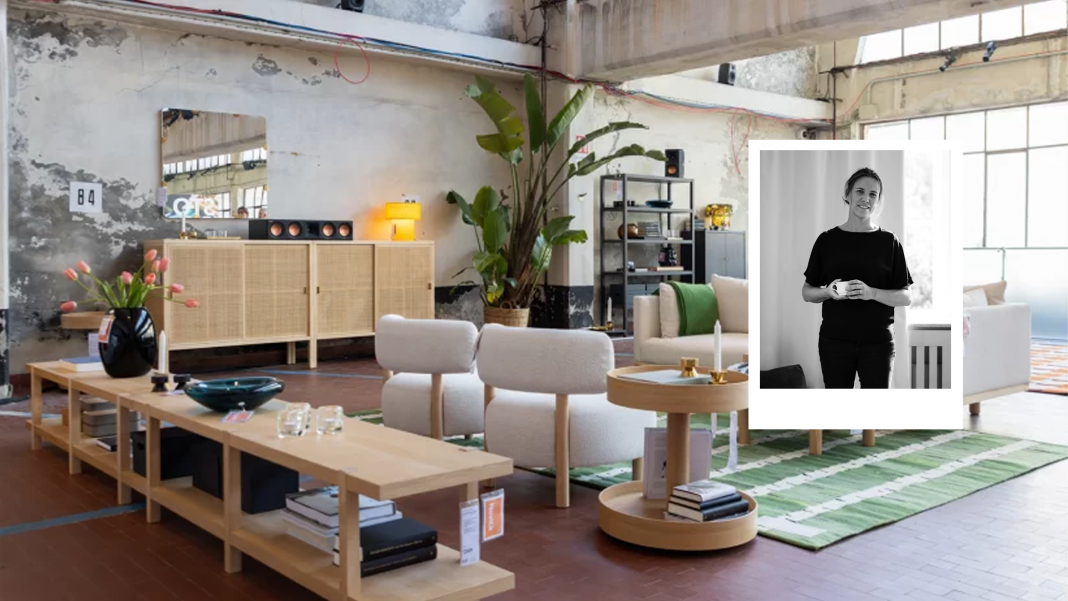In a captivating blend of craft, material innovation, and coastal inspiration, furniture designer Brogan Cox and marbling artist Nat Maks have unveiled the Tides table collection, which transforms sycamore wood into fluid, painterly pieces of functional art. Debuted during London Craft Week, the collaboration draws on traditional ink marbling techniques and applies them in unexpected ways—onto carved wood rather than paper—pushing the boundaries of both surface treatment and sustainable design.
Where wood meets water: The origins of the Tides collaboration
The seeds of the Tides collection were planted in Margate, a seaside town in southeast England known for its artistic community. Brogan Cox—co-founder of the renowned Sebastian Cox studio—attended a marbling workshop led by artist Natascha Maksimovic, who works professionally under the name Nat Maks. The workshop was meant to be a casual exploration, but it quickly led to deeper creative synergy between the two designers.
What followed was a dialogue not just between two craftspeople, but between two mediums: wood and ink. The pair began by developing two colour palettes inspired by their coastal surroundings. One referenced Margate’s vibrant seaside sunsets with hues of orange, yellow, and pink. The other evoked the cool, earthy tones of tidal pools—deep blues and soft greens. “We both wanted our location by the sea to be the influence,” Maks told Dezeen, capturing the spirit of the project’s emotional and geographical roots.

Marbling in motion: A craft technique reimagined
Marbling, a centuries-old technique traditionally used to embellish paper, became the foundation for a radical new surface treatment. Instead of applying it to flat, two-dimensional surfaces, Maks and Cox dipped carved sycamore wood components—tabletops and legs—into deep vats of water where floating ink had been carefully poured and swirled into mesmerizing patterns.
The application was almost performative. Moving the wood pieces slowly through the ink on the water’s surface created unpredictable, flowing patterns that mimicked the very tidal forces that inspired the collection. Maks describes the process as almost painterly, saying, “We leave parts of it so you can see the grain of the wood, which also looks like water. It’s like a wave coming in.”
What makes the technique even more striking is how the marbling interacts with the physical shape of the tables. The table legs feature wave-like forms, carved using CNC machining and then refined by hand sanding. This sculptural form, combined with the marbled finish, gives each piece a sense of motion—frozen in time, but still full of fluid energy.

A sustainable material with new potential
Central to this project is the use of English-grown sycamore, a fast-growing and often undervalued hardwood. “Sycamore is considered a weed in some forestry circles,” said Cox. “But it’s wonderfully tactile, pale and accepting of colour—perfect for this marbling process.” The project repositions sycamore not as a disposable byproduct of woodland management, but as a blank canvas for creative reinvention.
Cox also sees the marbled wood as a more sustainable alternative to natural stone. “This collaboration has allowed us to achieve the aesthetic of stone, but with the tactility and sustainability of wood,” she explained. “It’s witty, playful and poetic.” The marbled effect evokes the swirling veining of marble or granite but without the ecological footprint associated with quarrying and transporting stone.
This embrace of colour and experimentation contrasts with the natural finishes favoured by Cox’s husband and studio co-founder, Sebastian Cox. Where his work celebrates raw grain and minimalism, Brogan Cox pushes into bolder territory, as seen in her earlier Barker collection launched in 2019. The Tides collection marks an even deeper exploration of surface and story.

Marbling as a multidimensional experience
For Maks, the Tides collection has opened a new chapter in her marbling practice. Traditionally working on paper or flat surfaces, she has found fresh creative energy in applying her techniques to three-dimensional objects. “Moving from 2D to 3D has opened up a whole new level of interaction,” she said. “It’s not just a surface anymore—it’s an object you can walk around, touch, experience.”
This emphasis on tactility and engagement is part of what makes the tables so compelling. As one walks around them, the marbled pattern appears to shift and shimmer, following the curves of the wood grain and carved form. “You can get lost in the marbling as it curves with the grain of the wood,” Maks added. “It’s a celebration of fluidity.”

Craft at the crossroads of tradition and innovation
The Tides collection was unveiled at No.9 Cork Street in London’s Mayfair, as part of an exhibition for London Craft Week where Dezeen served as a media partner. The setting was fitting: a gallery that celebrates cutting-edge craft, showcasing a collection that bridges centuries-old techniques with digital fabrication and sustainable values.
While other designers, like Swedish studio Ringvide or Willem Zwiers, have also experimented with marbled wood, the collaboration between Cox and Maks stands out for its poetic balance between process and narrative, form and function. These tables are not just surfaces or statements—they’re stories etched in ink and wood, speaking to place, memory, and the potential of overlooked materials.
With the Tides collection, Brogan Cox and Nat Maks have not only created a new aesthetic language but also redefined what it means to collaborate across disciplines—where one designer’s grain meets another wave.



